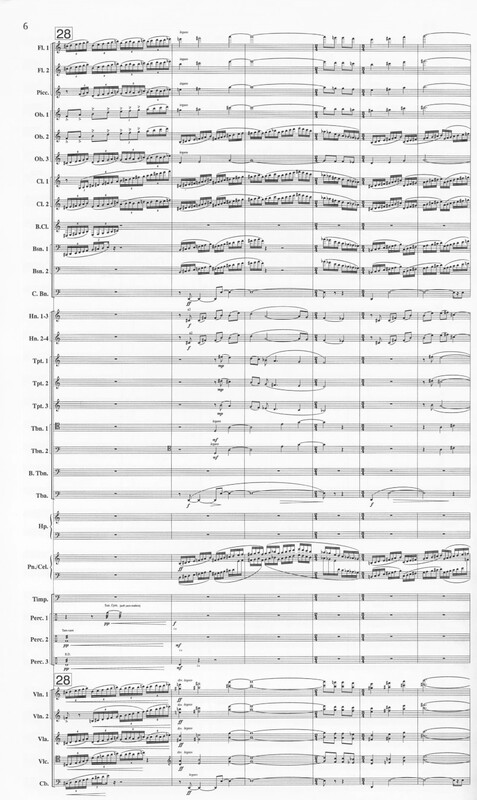Concerto for Orchestra
Item
-
Score title
-
Concerto for Orchestra
-
Composer
-
Jennifer Higdon
-
Program note
-
The "Concerto for Orchestra" is truly a concerto in that it requires virtuosity from the principal players, the individual sections, and the entire orchestra. Built from the inside out, the third movement was written first, and it is the movement that allows each principal player a solo, before moving into section solis. The winds are highlighted first, which are followed (after a tutti) by the strings, and then the brass. Each solo has its own unique material, some of which is utilized in the tutti sections of the movement.
The second movement was written next, inspired by the string sound of The Philadelphia Orchestra. This movement is like a scherzo in character, written in a jaunty rhythm and tempo that celebrates the joyous sound of strings. The movement begins with everyone playing pizzicato and then slowly integrates an arco sound, first through soloists, and then with all of the players. It continues to romp through to the end, where a snap pizzicato closes out the movement.
The fourth movement is a tribute to rhythm and the percussion section of the orchestra (harp, celesta, and piano are included in this movement). Since this piece was completed at the beginning of the 21st century, it seemed very fitting to have a movement that highlights the one section of the orchestra that has had the greatest amount of development during the 20th century. Ironically, the opening of this movement is the quietest and stillest part of the entire work, which is not what one might expect from percussion. The movement opens with bowed vibraphone and crotales…opening the way for the percussion to move through many of its pitched instruments (as well as collaborating with the harpist and celesta player, who are percussive in their nature). Eventually, the musicians move to non-pitched percussion, which is emphasized by the movement's tempo speeding up at key moments. This progression in the tempi will carry this movement from an extraordinarily slow start (quarter equals 42) through to the fifthmovement, which continues the progression of increasing tempi, until the end of that movement, which arrives at a quarter equals 160-180 on the metronome. These tempo increases occur at specific moments, usually covering 2 measures, and are meant to resemble the effect of a victrola being wound up.
The fifth movement, which begins with the entrance of the violins, highlights the entire orchestra and has its rhythm set up through an ostinato in the percussion, which has been carried over from the previous movement. The various sections of the orchestra converse in musical interplay throughout, while the tempo continues to increase. This occurs to such an extent, that a primary theme that is stated within the first minute of the movement will eventually come back in rhythmic values that are twice as long, but with the increased tempo, will sound like it did at its first appearance.
Surprisingly, the first movement was the last to be composed. It took writing the other four movements to create a clear picture of what was needed to start this virtuosic tour-de-force. The opening of the piece begins with chimes and timpani, sounding together, and then a quick entrance by the strings in energetic scale patterns (octatonic), which moves the orchestra up through the winds and finally adds the brass in major chords, a major second apart (this is a sound the composer has been working with for years). This movement is primarily tutti in its use of instruments, but there are small chamber moments, in recognition of the fact that it takes many individuals to make the whole of the orchestra.
--Jennifer Higdon
“Concerto for Orchestra” was commissioned by The Philadelphia Orchestra as part of its Centennial Celebrations. Funding was provided by The National Endowment for the Arts, The Philadelphia Music Project (funded by The Pew Charitable Trusts, administered by Settlement Music School) and Peter Benoliel. Premiered June 12, 2002, Verizon Hall, Philadelphia, Wolfgang Sawallisch, conducting.
 Jennifer Higdon
Jennifer Higdon

